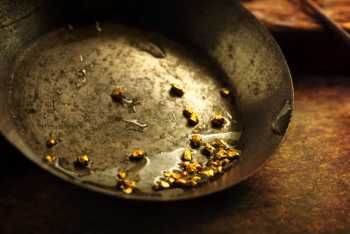
Cannabis Science and Technology
- June 2020
- Volume 3
- Issue 5
Hazardous Location Requirements for Chemical Process Areas in Extraction Facilities

This article explores hazardous location requirements and hazardous area classification as they relate to extraction facility design and construction, specifically diving into the National Fire Protection Association code 497.
Cannabis or hemp extraction typically involves the use of hazardous materials, including flammable liquids, gases, or vapors. The use and storage of these hazardous materials, coupled with the complex electrical systems and equipment utilized in extraction facilities, leads to a myriad of safety hazards that business owners must be aware of. This article explores hazardous location requirements and hazardous area classification as they relate to extraction facility design and construction, specifically diving into the National Fire Protection Association (NFPA) code 497. Some of the topics we discuss in this article include: equipment and safety standards required to be implemented in hazardous areas and important considerations when making these decisions; how to ensure compliance with local jurisdictions and other governing bodies; building the right team of experts to ask the right questions and avoid common pitfalls; important equipment and space considerations to keep top of mind before purchasing any equipment; and hazardous area classifications and what that means for your facility.
Hemp and cannabis extraction facilities typically use a variety of hazardous materials in the extraction and refinement processes. These materials can include ethanol, methanol, propane, butane, hexane, heptane, and pentane-among others. Carbon dioxide may also be used, and although it isn’t flammable or explosive, it is an asphyxiant, which can cause suffocation to occupants and therefore comes with its own life-safety considerations. When it comes to hazardous materials, it is important to understand the quantity of each material used and stored in your facility. It is these quantities that will determine the type of construction required for your facility and can dramatically affect construction costs.
Control Areas and Maximum Allowable Quantities
Many facilities can avoid a hazardous classification if they can limit the use and storage of hazardous materials to specified control areas (or rooms). A control area is a term used in the building codes and is defined as a portion of a building within which hazardous materials are allowed to be stored, dispensed, used, or handled in quantities not exceeding the maximum allowed quantities (MAQ). The number of control areas is limited by the building codes, and is determined by the quantities and types of hazardous materials used and stored within your facility. If your process requirements can stay within the MAQ, the building may not need to be classified as a hazardous occupancy (that is, H occupancy), which may avoid the higher construction costs associated with a hazardous occupancy building classification. Instead, specified control areas within the building will be designed as hazardous classification areas where any hazardous materials are used or stored. For example, your extraction process may be contained within one such control area. Your isolation process may be contained within another. Bringing qualified and experienced architectural and engineering professionals to your team early can help you determine the MAQ for your materials and processes, and point the way toward the best and most cost effective design path for your facility.
When Control Areas Are Not Enough
If your facility and processing goals are large enough, you may require solvent and other hazardous material quantities that are greater than the MAQ allowed within building control areas. When this is the case, the entire building will need to carry a hazardous occupancy classification. Such a building will have increased setback requirements from property lines and will be subject to more stringent building, mechanical, and electrical code requirements. However, there will be no limits placed on the quantities of hazardous materials that can be used and stored in your facility. This can be a huge advantage for large extraction facilities. Here again, a qualified and experienced engineering team can help you navigate the stricter code requirements surrounding such a facility.
Room Classifications
The National Fire Protection Association (NFPA) code 497 addresses the classification of flammable liquids, gases, and vapors and of hazardous locations for electrical installations in chemical process areas, and has been adopted by most jurisdictions (1). Most extraction and refinement areas are classified as Class I, Division 1 (CID1) or Class I, Division 2 (CID2) spaces. NFPA 497 defines a CID1 space as a location (1) “in which ignitable concentrations of flammable gases, flammable liquid-produced vapors, or combustible liquid-produced vapors can exist under normal operating conditions . . .” NFPA 497 defines a CID2 space as a location “in which volatile flammable gases, flammable liquid-produced vapors, or combustible liquid-produced vapors are handled, processed or used, but in which the liquids, vapors or gases will normally be confined within closed containers or closed systems from which they can escape only in the case of accidental rupture . . .” The essential difference between the two classifications is whether or not a flammable concentration of liquids, gases, or vapors can exist during the normal course of operation. By this definition, many extraction spaces will likely be categorized as CID2, but there are nuances that must be taken into consideration when selecting extraction equipment and locating that equipment within your extraction spaces. These nuances can have a considerable effect on your electrical design and can drive up your electrical construction costs if not dealt with properly.
Open Versus Closed Systems
Most jurisdictions will not allow open loop extraction systems because of the serious life-safety concerns they raise. But even closed loop systems can become “open” at certain times during the process. For example, what happens when you open the lid of your extraction vessel to remove the filter bags of spent hemp? The hemp still contains residual ethanol in small quantities, and that ethanol is now free to evaporate into the room. This constitutes an open system at that location, albeit only for a short period of time. NFPA 497 provides guidance on how such situations are to be handled. See Figure 1.
In this example, opening the vessel creates a situation similar to the vent shown in Figure 1 from NFPA 497. Notice that there is a 3-ft. radius around the vent location that is classified as CID1, and an additional 2-ft. radius that is classified as CID2. Also note that the CID2 zone extends for a distance of 10 ft. at a height of 18-in. above the floor. Any below-grade locations within that zone become CID1. Understanding and applying this figure to the electrical requirements in an extraction room can have a major impact on the overall room design. For example, suppose your extraction vessel is on an elevated platform that is 5 ft. above the floor, and the vessel opens from the top 3 ft. above the platform. If the room ceiling is 12 ft. high, any lights over the vessel will have to be CID2 rated. A lower ceiling may require the lights to be CID1 rated, and there is a big difference in cost for CID1 lights. If the vessel is near a wall, then a portion of the wall will be within the CID1 and CID2 zones. Any outlets in those areas would have to be rated appropriately. What about other equipment located within the classified zones shown in Figure 1? Such equipment would be required to be rated for use in a classified environment, and the power connection to that equipment would also have to be so rated. Other equipment in the room may also create overlapping classified zones. It is apparent that great care must be taken when laying out equipment within an extraction room. Sometimes designers will default to declaring that the entire room must be classified as CID1 or CID2, but this is not required by the code, and can unnecessarily lead to increased construction costs. It is also worth noting that NFPA 497 contains many other diagrams that may apply to equipment in an extraction facility. An experienced engineering team can provide guidance in ensuring that your extraction room and all other control areas are properly designed to account for CID1 and CID2 zones within those spaces.
Final Thoughts
Understanding the various codes surrounding hazardous materials, control areas, zone classifications, and other critical factors that apply to designing and constructing an extraction facility can be a daunting task. Furthermore, code officials have the authority to interpret these codes as they see fit. Bringing the code officials into the design discussions as collaborators early on can have tremendous benefits for the project, saving time and reducing frustration. Engaging with an experienced and knowledgeable architectural and engineering team will facilitate working with the code officials to ensure compliance. They can ask the right questions and avoid serious pitfalls during the design and permitting process, and can work with you to ensure that construction goes as smoothly as possible.
Reference
About the Author
Rob James, PE, has nearly 30 years of mechanical engineering experience working on a diverse range of projects. His engineering experience includes a space launch complex, oil refinery, nuclear power plant, and building heating, ventilation, and air conditioning (HVAC) systems for hospitals, schools, dental clinics, veterinary clinics, churches, restaurants, offices, multi-family housing, retail, and industrial facilities. When recreational cannabis was legalized in Oregon, Rob applied his extensive experience to learning about this industry and its unique design nuances with the team at
How to Cite this Article
R. James, Cannabis Science and Technology 3(5), 14-16 (2020).
Articles in this issue
over 5 years ago
Hope on the Hemp Testing Horizonover 5 years ago
Everything Old is New Again: Cannabis Returns to USPover 5 years ago
A Tribute to the Life and Legacy of Charlotte Figiover 5 years ago
A Chemist’s Guide to the COVID-19 Outbreakover 5 years ago
Spring 2020 CANN Virtual Symposium Meeting ReportNewsletter
Unlock the latest breakthroughs in cannabis science—subscribe now to get expert insights, research, and industry updates delivered to your inbox.


